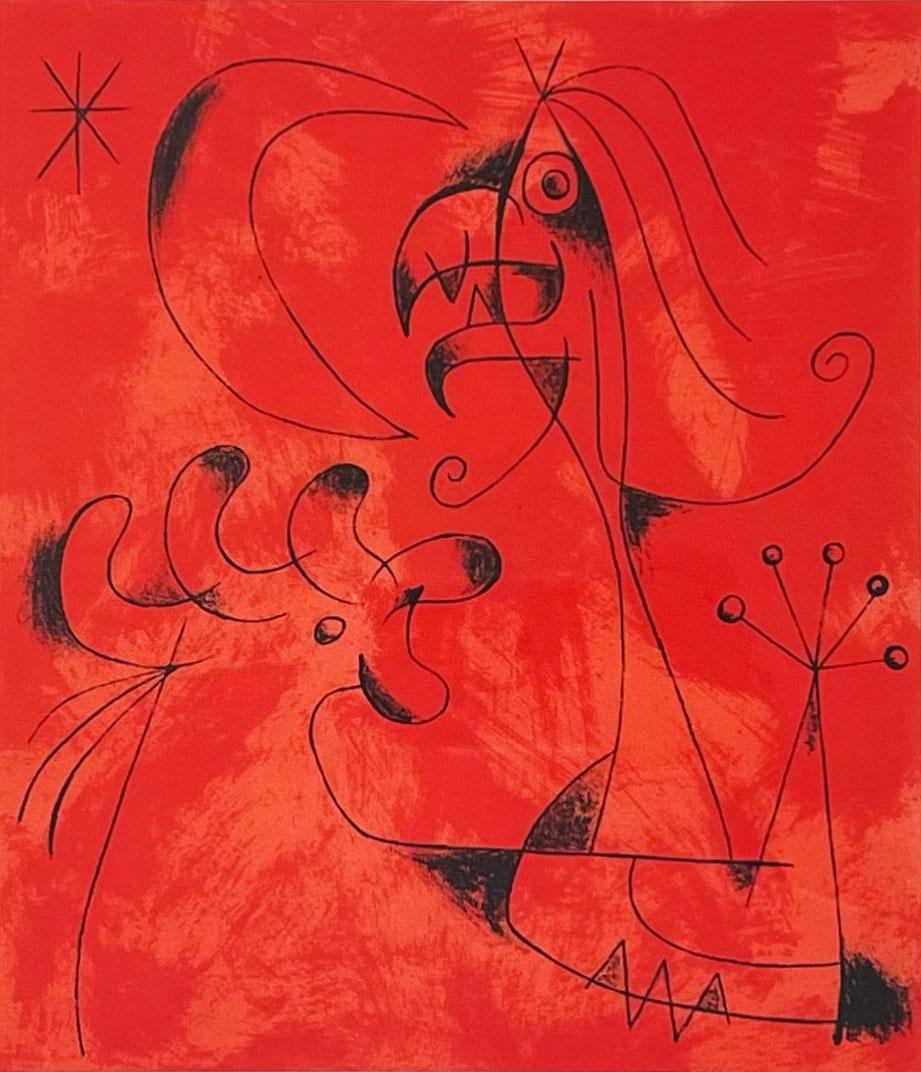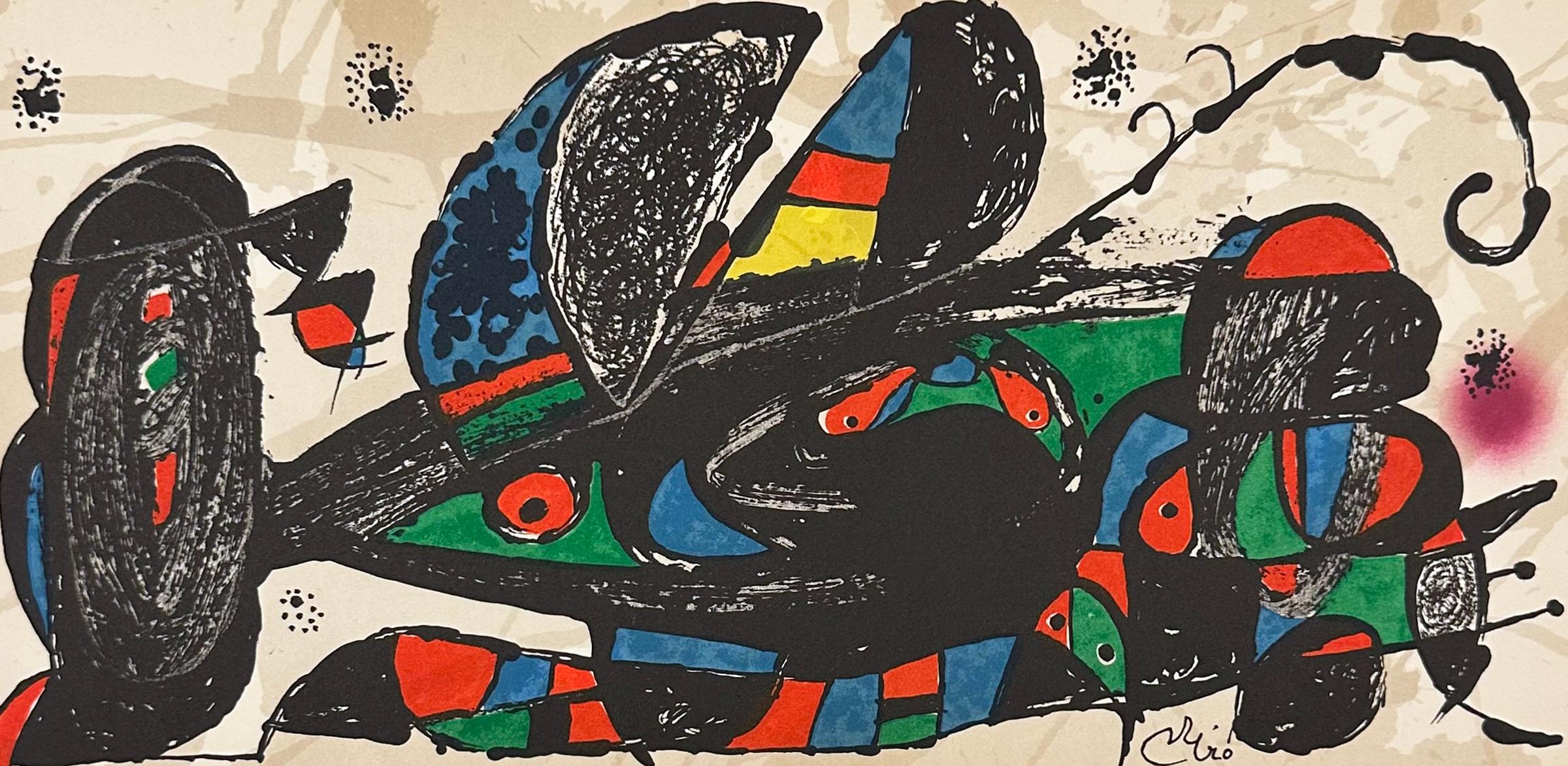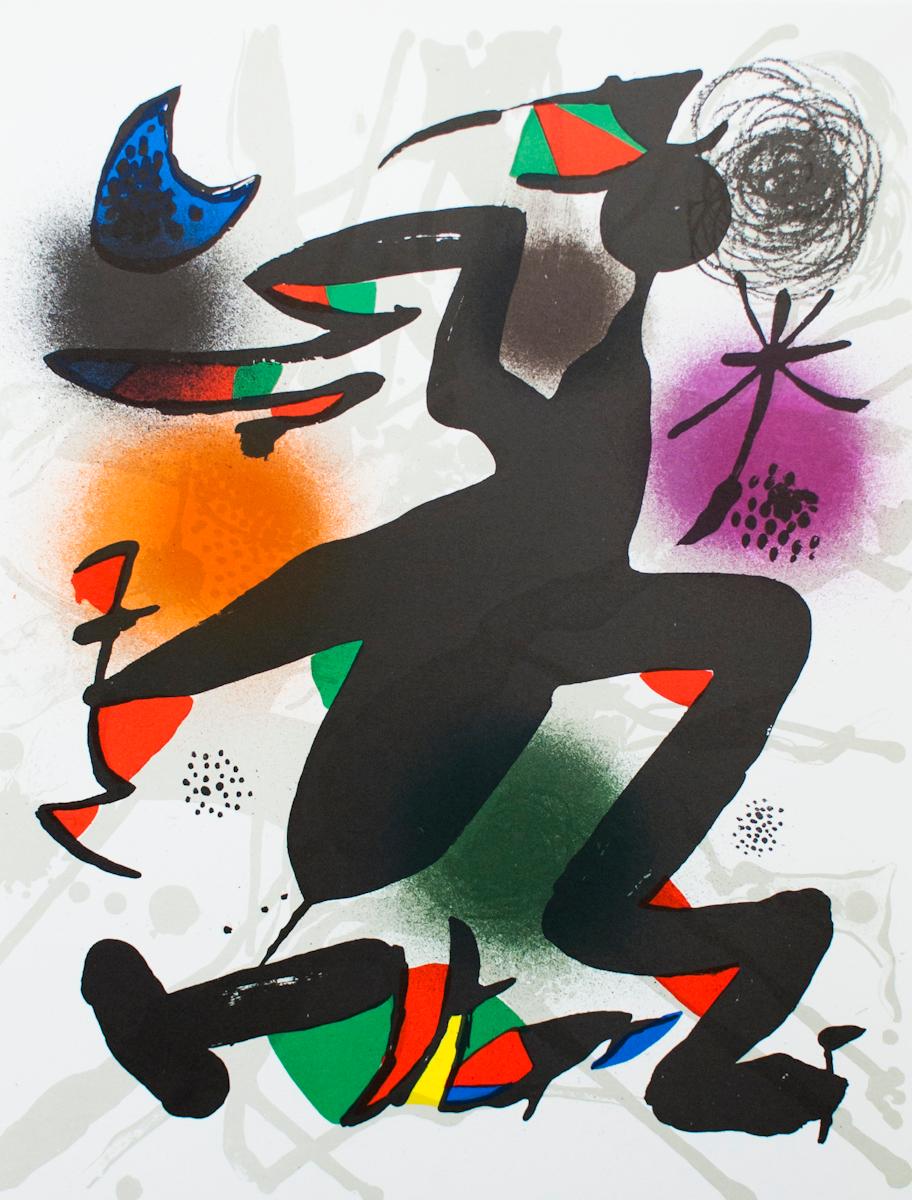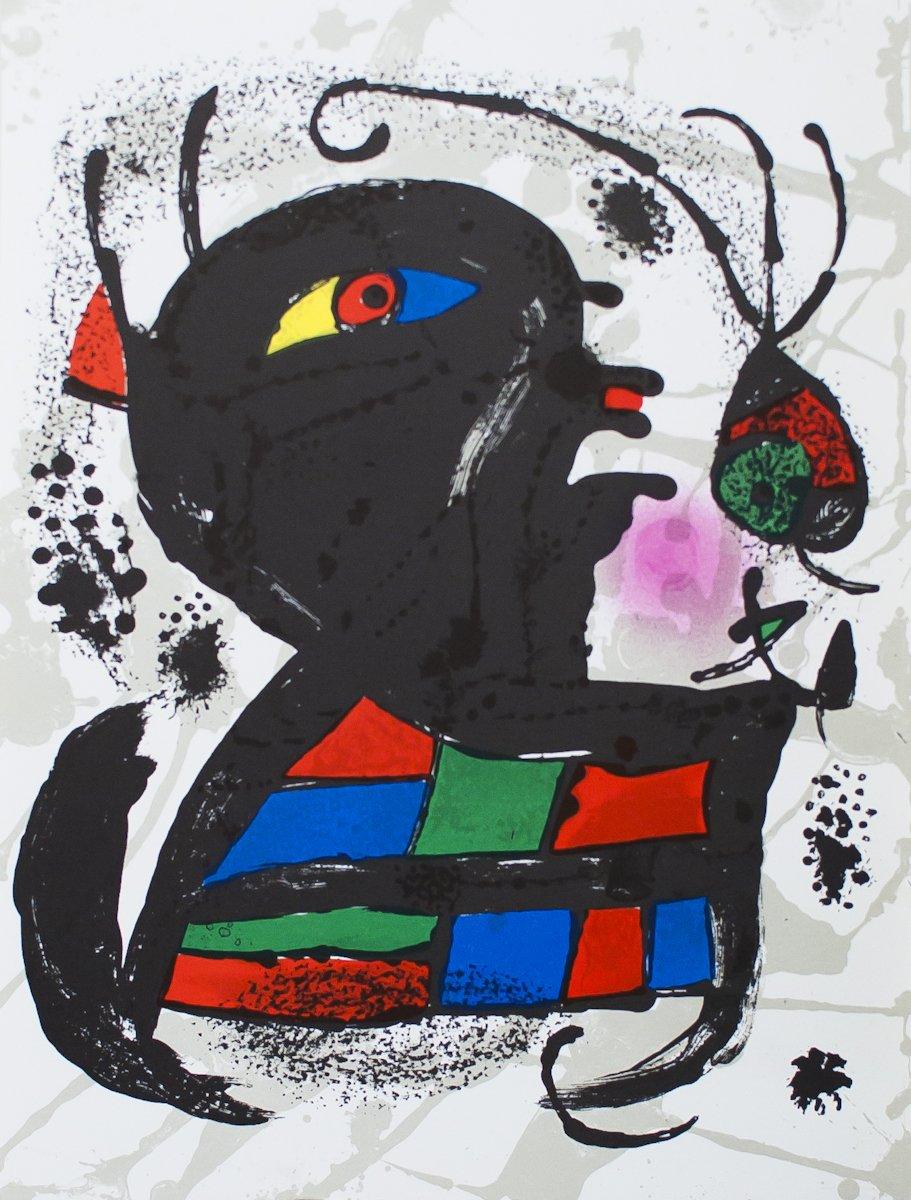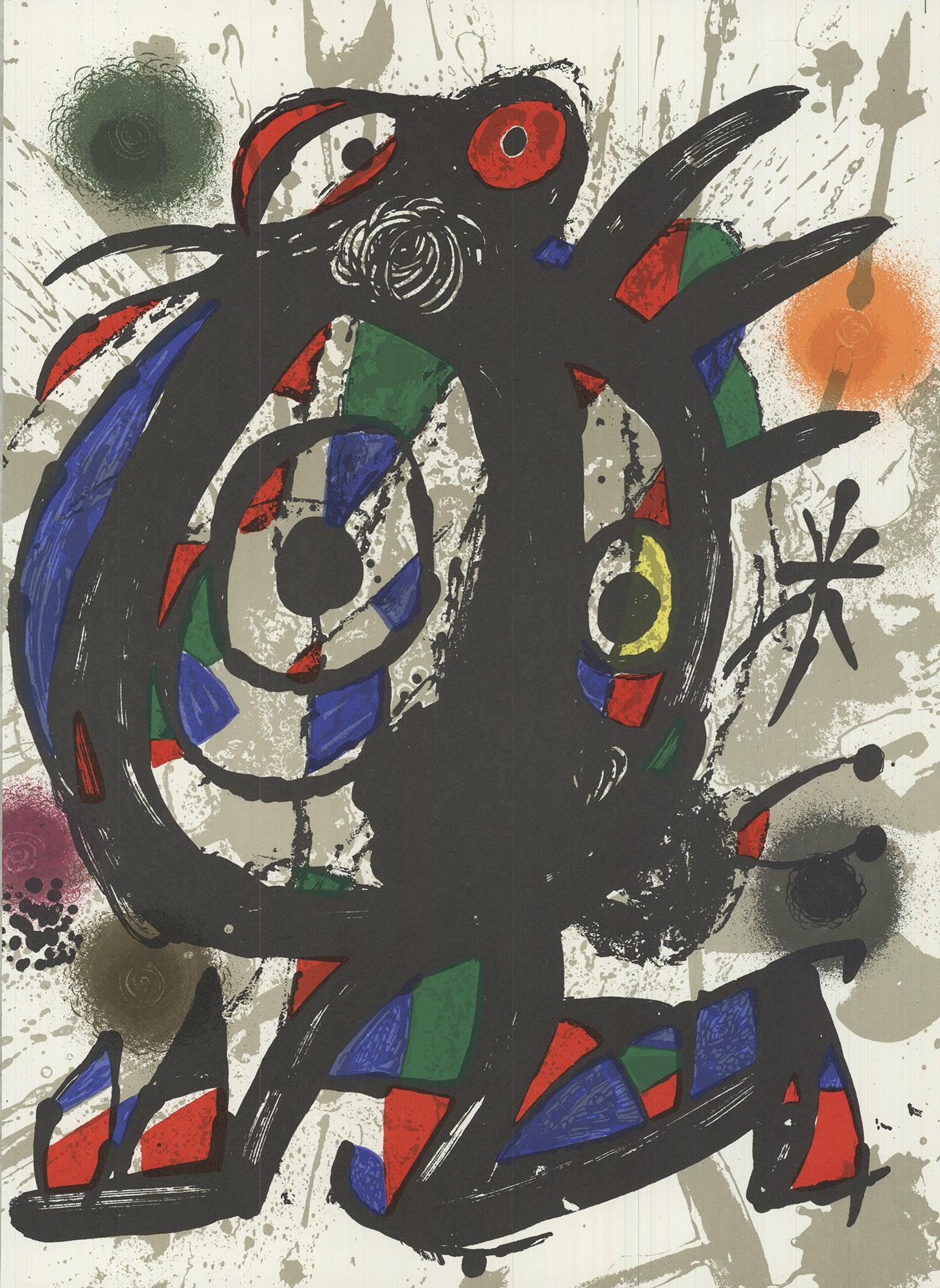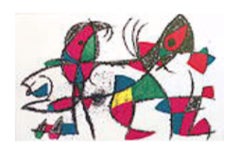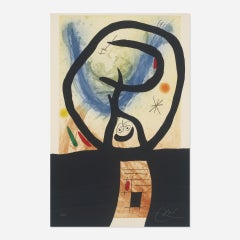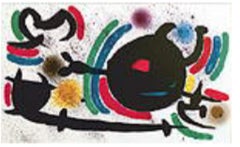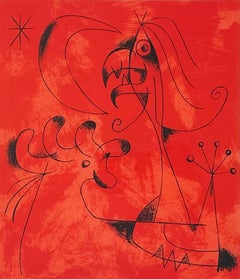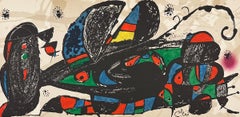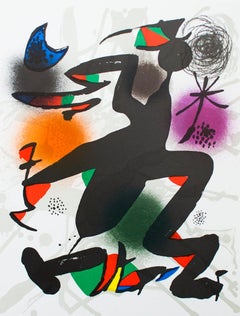Video Loading
Want more images or videos?
Request additional images or videos from the seller
1 of 3
Joan Miro (1893 - 1983)Plate VI from Espriu1975
1975
Price Upon Request
Price Upon Request
Price Upon Request
Price Upon Request
Price Upon Request
Price Upon Request
Price Upon Request
Price Upon Request
Price Upon Request
Price Upon Request
About the Item
Plate VI from the portfolio of nine works to illustrate Poems by Salvador Espriu. Published by Sala Gaspar, Barcelona in 1975 and printed by J.J. Torralba, Rubi (Barcelona). Signed by the artist and numbered from the edition of 50 plus proofs.
Joan Miro (1893 - 1983)
Plate VI from Espriu, 1975, (/50)
Aquatint and etching with engraving in colors with carborundum
41.30 x 35.50 in
- Creator:Joan Miro (1893 - 1983)
- Creation Year:1975
- Dimensions:Height: 41.3 in (104.91 cm)Width: 35.5 in (90.17 cm)
- Medium:
- Movement & Style:
- Period:
- Condition:
- Gallery Location:Fort Lauderdale, FL
- Reference Number:Seller: 316661stDibs: LU574310010622

About the Seller
5.0
Vetted Professional Seller
Every seller passes strict standards for authenticity and reliability
Established in 1998
1stDibs seller since 2017
33 sales on 1stDibs
Typical response time: 9 hours
- ShippingRetrieving quote...Shipping from: Fort Lauderdale, FL
- Return Policy
More From This Seller
View AllMiro Lithographs Volume II Plate X
Located in Fort Lauderdale, FL
Original lithograph in colors from the unsigned edition included in Miro Lithographs Volume I. Published by Mourlot, Paris. Reference Mourlot 857.
Category
21st Century and Contemporary Modern More Art
Materials
Lithograph
Price Upon Request
La Fronde
Located in Fort Lauderdale, FL
Signed and numbered to lower edge ‘48/75 Miró’. This work is number 48 from the edition of 75 published by Maeght Éditeur, Paris.
Literature: Dupin 501
Category
21st Century and Contemporary Modern More Art
Materials
Etching, Aquatint
Price Upon Request
Miro Lithographs Volume I Plate X
Located in Fort Lauderdale, FL
Original lithograph in colors from the unsigned edition included in Miro Lithographs Volume I. Published by Mourlot, Paris. Reference Mourlot 857.
Category
21st Century and Contemporary Modern More Art
Materials
Lithograph
Price Upon Request
Coquelicots
By Henri Matisse
Located in Fort Lauderdale, FL
Lithograph after a gouache decoupee from Verve 35/36
Category
1950s Modern Prints and Multiples
Materials
Lithograph
L'écuyère (The Horsewoman)
By Pablo Picasso
Located in Fort Lauderdale, FL
Artist: Pablo Picasso (Spanish, 1881-1973)
Title: "L`Ecuyère (The Horsewoman)"
*Unsigned edition, though signed by Picasso in the plate (printed signature) lower right
Year: 1960
Med...
Category
Mid-20th Century Modern Figurative Prints
Materials
Archival Paper, Lithograph
Price Upon Request
Rosace
By Henri Matisse
Located in Fort Lauderdale, FL
Lithograph after a gouache decoupee from Verve 35/36
Category
1950s Modern Prints and Multiples
Materials
Lithograph
You May Also Like
Joan Miro (Plate 2)
By Joan Miró
Located in Washington, DC
Artist: Joan Miro
Title: Joan Miro (Plate 2)
Portfolio: Joan Miro
Medium: Lithograph
Date: 1956
Edition: Unnumbered
Frame Size: 17" x 24"
Sheet Size: 9" x 15"
Signature: Unsigned
Ref...
Category
1950s Abstract Abstract Prints
Materials
Lithograph
Joan Miro (Plate 6)
By Joan Miró
Located in Washington, DC
Artist: Joan Miro
Title: Joan Miro (Plate 6)
Medium: Original lithograph
Portfolio: Joan Miro
Year: 1956
Edition: Unnumbered
Framed Size: 15 1/2" x 14 1/4"
Sheet Size: 9" x 7 3/4"
Si...
Category
1950s Abstract Animal Prints
Materials
Lithograph
Joan Miro
By Joan Miró
Located in Washington, DC
Artist: Joan Miro
Title: Joan Miro
Medium: Lithograph in colors
Date: 1974
Edition: Unnumbered
Frame Size: 15 1/8" x 22 3/4"
Sheet Size: 7 7/8" x 15 1/2"
Signature: Signed in the pla...
Category
1970s Abstract Abstract Prints
Materials
Lithograph
Joan Miro 'Litografia Original IV'
By Joan Miró
Located in Brooklyn, NY
This original lithograph by Joan Miró, titled "Lithografia Original IV," is a first printing published in "Joan Miró Lithographs Volume II" in 1975 by Maeght Editeur in Paris. This p...
Category
20th Century Modern Prints and Multiples
Materials
Lithograph
$200 Sale Price
20% Off
1975 Joan Miro 'Litografia original V'
By Joan Miró
Located in Brooklyn, NY
This original lithograph by Joan Miró, titled "Lithografia V," is a first printing published in "Joan Miró Lithographs Volume II" in 1975 by Maeght Editeur in Paris. This particular ...
Category
1970s Modern Prints and Multiples
Materials
Lithograph
$200 Sale Price
20% Off
1975 Joan Miro 'Litografia original I' Lithograph Mid Century
By Joan Miró
Located in Brooklyn, NY
This original lithograph by Joan Miró, titled "Lithografia Original I," is a first printing published in "Joan Miró Lithographs Volume II" in 1975 by Maeght Editeur in Paris. This p...
Category
1970s Abstract Prints and Multiples
Materials
Lithograph
